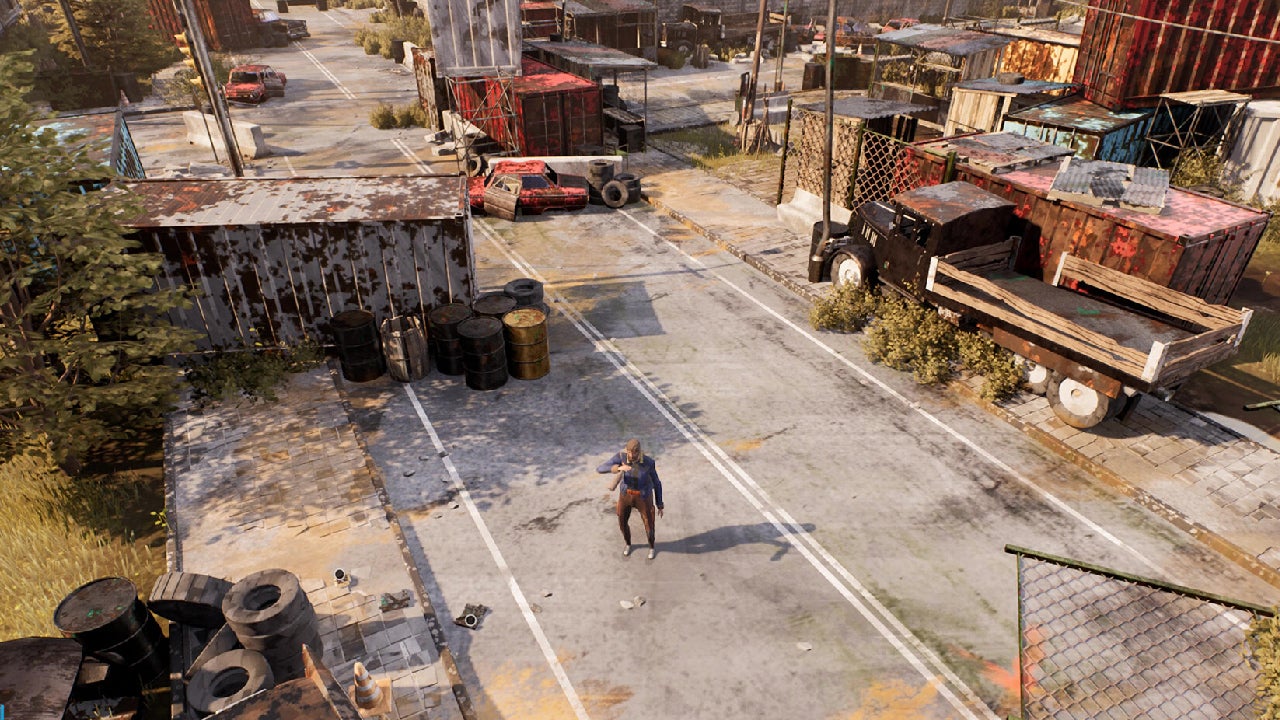City 20 is an upcoming survival sandbox adventure game that puts you in a quarantined secret city, one where nuclear work was done, after a radiological disaster of some kind has cut it off from the outside world. Waking up with your own past a mystery, you’re tasked to survive among the factions of people that have formed in this little, localized apocalypse. The developers have tried to create a world inspired by classics like Stalker, The Road, and La Jetée.So far so good, right? These are all things I like to hear. I recently sat down with a demo build of the in-progress game and got a look at how it’s going so far.City 20 – First ScreenshotsThe first thing that really strikes me about City 20 is the art style. It’s confident and decisive, to my eyes inspired by comics or paintings, with very stylized characters: Broad hips, bowed legs, narrow shoulders. The colors meanwhile are muted, washed out. They’re something between a set of slightly dirty pastel tones and the darker shades that have become pretty popular in the wake of Disco Elysium. Either way, the aesthetics as a whole are pretty confident and consistent, which I think is important and good to see as this sort of sandbox really lives or dies on how deeply the visuals can pull you into the unfolding story.City 20 is supposed to be a survival sandbox, one where a realistic social and ecological simulation plays out over seasons of in-game time. Figuring out the politics of the different factions, how they relate, and how to gather the limited resources of the ruined city is supposed to be a major part of the game. The crafting and survival elements are important but relatively simple and basic, with the emphasis there on conserving resources and not overtaxing the environment—one example given by the developers is harvesting too many deer or rabbits, causing local foxes and wolves to become aggressive toward people.In the demo, however, most of my time was spent figuring out what to eat and drink and where to get it from. Though I woke up in a cabin provided by a friendly man, the two steaks and four apples he gave me barely staved off hunger for a day. While I’m all for a hunger and thirst system, this one was a bit aggressive and will certainly need tweaks before it’s out. How do I engage with the cool social simulation if most of every day has to be spent figuring out the logistics of food?Anyway, once I figured out I could just murder the nice man and steal all his food, I had enough to get me through my demo time without further concerns. Once I did that I saw some promising glimmers beneath the post-apocalyptic muck and rust.By talking to people you can learn about them, and by trading with them you can figure out what they need. Every NPC I encountered had a job and a faction, ate and drank, and had a routine that included going to work and sleeping. Trading with them for what they wanted made them more favorable toward me—and presumably making enough of them favorable toward me over time would alter the whole faction’s opinion of me. The factions themselves are also part of the balance of the in-game economy. They need resources like metal and wood to craft things and sell amongst themselves, and the characters need food and water to live. Giving lots of resources to a favored faction would, eventually, make them more powerful and wealthier than other factions simply because they have more food, better tools, and better weapons. On the other hand, losing access to an entire faction because they hate you would cut you off from a significant portion of the in-game economy—and probably make gathering resources near their territory pretty dangerous, as the pretty simple combat system goes well for you when you’re one-on-one, but the same fights get pretty one-sided pretty fast if several enemies group up on you.Once I figured out I could just murder the nice man and steal all his food, I had enough to get me through my demo time without further concerns.Sandboxes like this one are pretty hard to judge at this stage in development. I’m inclined to look over the frustrating bits toward the more interesting systems, but this is also a pretty tricky genre to develop in the first place. Games can have deeply interesting simulations at their heart but wind up being boring to engage with because of poor pacing, because the core gameplay isn’t fun, or because the simulation itself is too opaque for the player to manipulate. Hopefully City 20 doesn’t fall into any development traps, because I’m interested to see where it’s going from here.
Source link
City 20 Is a Survival Sandbox That’s Both Bleak and Beautiful


